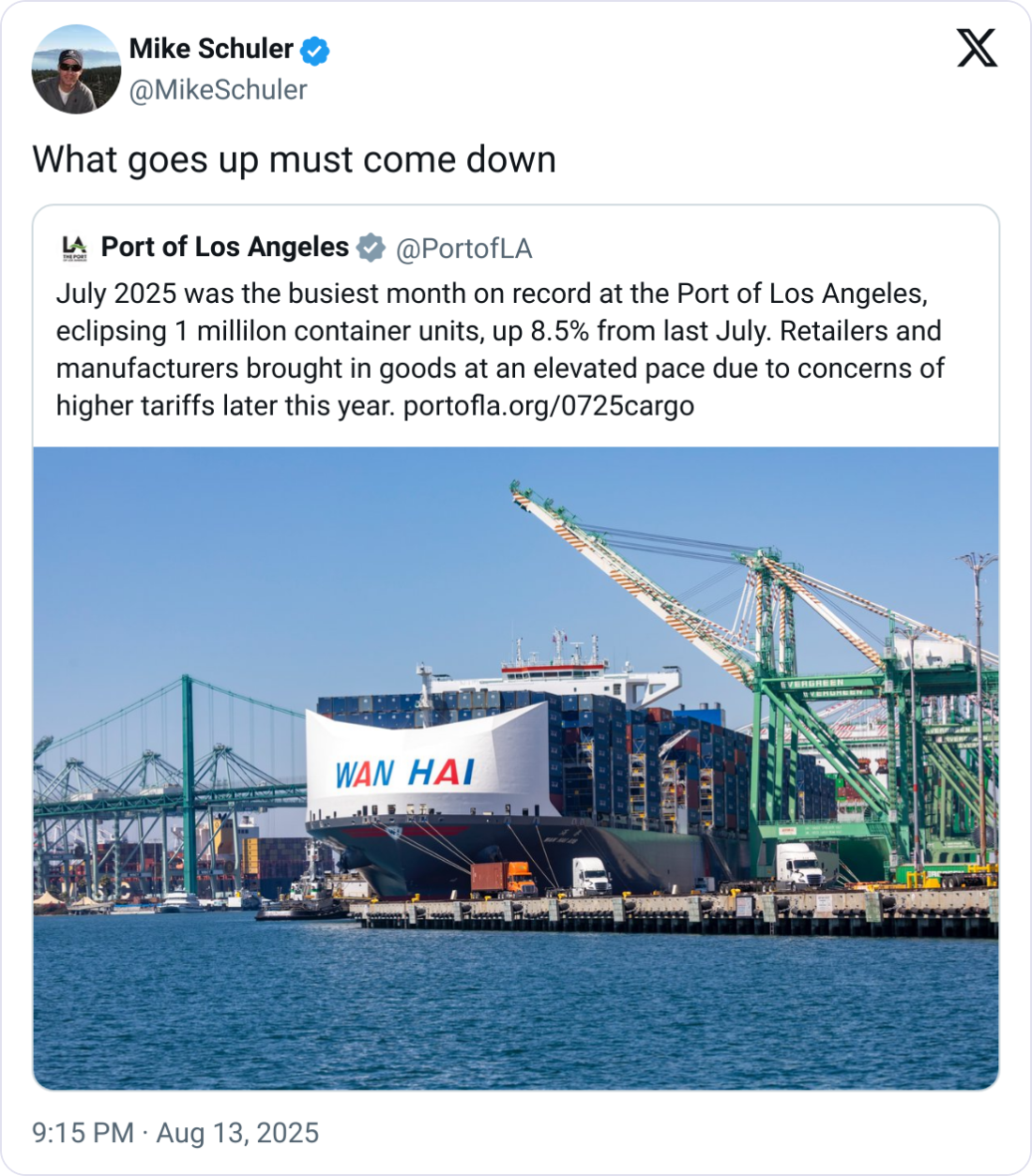🎣 Diesel Won't Drop
Plus: a $400K lobster shipment stolen en route to Costco, a $7M cocaine bust, California’s non-domiciled CDL crackdown's legal challenge, and more.
The Port of Los Angeles hit record volumes in July as shippers raced to beat tariff deadlines

The Port of Los Angeles moved more than 1 million TEUs in July, the highest monthly volume in its 117-year history, as shippers front-loaded imports ahead of steep tariff increases. The surge reflects a shift in traditional peak-season patterns, with importers accelerating orders to avoid costs that could reach 30% or higher on goods from China.

The port processed 1,019,837 TEUs in July, including a record 543,728 TEUs in imports. Executive Director Gene Seroka attributed the milestone directly to tariff concerns.
“Shippers have been frontloading their cargo for months to get ahead of tariffs and recent activity at America’s top port really tells that story,” said Seroka.
While port labor and operations kept cargo flowing without delay, downstream transportation providers are now feeling the effects of the volume drop-off.
“Trucking and rail companies make their money moving the containers. Less volume means less projected revenue,” Short explained.
Additional industry impacts include:
Retail imports, particularly low-cost seasonal goods, have slowed as consumers adjust spending patterns. July shipments included seasonal and household items for major U.S. retailers such as Walmart, Home Depot, and IKEA. Baer noted that “volume follows consumer behavior coupled with risk-averse behavior by importers.”
Data from Marine Exchange shows container ship arrivals into Los Angeles and Long Beach falling below seasonal averages:
The early surge followed by a sharp drop highlights the volatility that tariff deadlines can create for supply chain planning. While the port managed the influx efficiently, transportation providers now face a softer-than-usual late-summer shipping environment.
Source: CNBC
Join over 14K+ subscribers to get the latest freight news and entertainment directly in your inbox for free. Subscribe & be sure to check your inbox to confirm (and your spam folder just in case).